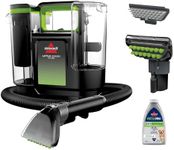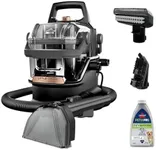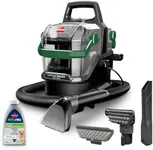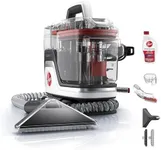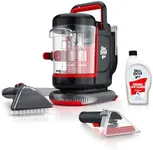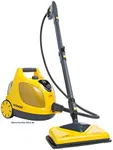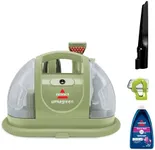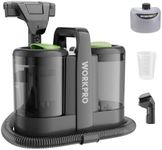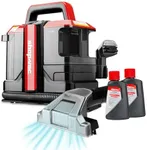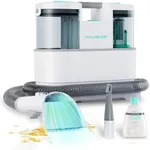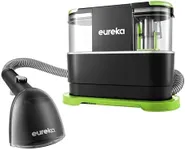Buying Guide for the Best Portable Upholstery Cleaners
Choosing the right portable upholstery cleaner can make a significant difference in maintaining the cleanliness and longevity of your furniture. These devices are designed to remove stains, dirt, and allergens from your upholstery, making them essential for households with pets, children, or high traffic. When selecting a portable upholstery cleaner, it's important to consider several key specifications to ensure you get the best fit for your needs.Suction PowerSuction power refers to the cleaner's ability to lift dirt and moisture from your upholstery. This is important because stronger suction ensures more effective cleaning and faster drying times. Suction power is often measured in watts or air watts. For light cleaning tasks, a lower suction power may suffice, but for deep cleaning or dealing with tough stains, a higher suction power is recommended. Consider your cleaning needs and the type of upholstery you have when evaluating this spec.
Water Tank CapacityThe water tank capacity indicates how much water the cleaner can hold. This is important because a larger tank means fewer trips to refill, making the cleaning process more efficient. Tank capacities can range from small (less than 1 liter) to large (over 2 liters). If you have a lot of upholstery to clean or prefer fewer interruptions, opt for a cleaner with a larger tank. For smaller tasks or occasional use, a smaller tank may be sufficient.
Weight and PortabilityWeight and portability are crucial factors for a portable upholstery cleaner, as they determine how easy it is to maneuver and carry the device. Lighter models are easier to handle and transport, especially if you need to clean multiple rooms or areas. However, lighter models may have smaller tanks and less powerful motors. Consider your physical strength and the areas you need to clean when choosing the right balance between weight and functionality.
Cleaning AttachmentsCleaning attachments are additional tools that come with the cleaner to help tackle different types of stains and surfaces. Common attachments include crevice tools, brush heads, and upholstery tools. These attachments are important because they enhance the versatility and effectiveness of the cleaner. If you have a variety of upholstery types or specific cleaning challenges, look for a model with a range of useful attachments. If your needs are more straightforward, fewer attachments may be sufficient.
Cord Length and Hose ReachCord length and hose reach determine how far you can move the cleaner from the power outlet and how easily you can reach different areas of your upholstery. A longer cord and hose provide greater flexibility and convenience, especially in larger rooms or when cleaning hard-to-reach spots. If you have a large area to clean or limited power outlets, opt for a model with a longer cord and hose. For smaller spaces, a shorter cord and hose may be adequate.
Noise LevelNoise level refers to how loud the cleaner is during operation. This is important because a quieter cleaner is more pleasant to use, especially in households with children or pets. Noise levels are usually measured in decibels (dB). If you are sensitive to noise or plan to use the cleaner frequently, look for models with lower noise levels. For occasional use, noise level may be less of a concern.
Ease of MaintenanceEase of maintenance includes how simple it is to clean and maintain the cleaner itself. This is important because regular maintenance ensures the longevity and performance of the device. Features like removable tanks, easy-to-clean filters, and accessible parts can make maintenance more straightforward. If you prefer a low-maintenance option, look for models with user-friendly maintenance features. If you don't mind a bit of extra work, this may be less of a priority.

